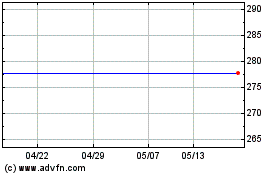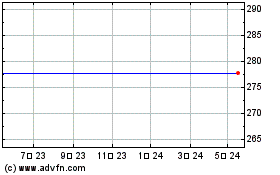Biogen’s QALSODY® (tofersen), the First Therapy to Treat Rare,
Genetic Form of ALS, Received Positive Opinion from CHMP
- SOD1-ALS is a devastating, uniformly fatal, and
ultra-rare genetic form of ALS affecting less than 1,000 people in
Europe1
- With QALSODY, Biogen has advanced the role of neurofilament in
the development of new medicines for ALS, with the potential to
accelerate further discovery in the field
CAMBRIDGE, Mass., Feb. 23, 2024 (GLOBE NEWSWIRE) -- Biogen Inc.
(Nasdaq: BIIB) announced the Committee for Medicinal Products for
Human Use (CHMP) of the European Medicines Agency (EMA) adopted a
positive opinion recommending a marketing authorization under
exceptional circumstances for QALSODY® (tofersen)
for the treatment of adults with amyotrophic lateral sclerosis
(ALS), associated with a mutation in the superoxide dismutase 1
(SOD1) gene. If authorized by the European Commission
(EC), QALSODY will be the first treatment approved in the European
Union to target a genetic cause of ALS, also known as motor neuron
disease (MND).
“The CHMP’s positive opinion reinforces the impact QALSODY can
have in SOD1-ALS and further demonstrates Biogen’s
commitment to address the unmet needs of people living with ALS and
neuromuscular diseases,” said Priya Singhal, M.D., M.P.H., Head of
Development at Biogen. “We are proud to help pioneer the role of
neurofilament in SOD1-ALS clinical trials and are deeply
grateful to the people living with SOD1-ALS, their loved
ones and study care teams for their dedication to furthering
research for the ALS community.”
The CHMP’s recommendation for QALSODY is based on the totality
of evidence, including the targeted mechanism of action, biomarker
and clinical data. In the 28-week Phase 3 VALOR study, reductions
of 60% in plasma neurofilament light chain (NfL) were observed in
participants who received QALSODY compared to the placebo group,
suggesting reduced neuronal injury. Trends towards improvement in
the physical abilities of participants who received QALSODY were
seen compared to those who received placebo, as measured by the ALS
Functional Ratings Scale-Revised (ALSFRS-R). The most common side
effects that occurred in ≥10% of QALSODY treated participants and
more than the placebo arm were pain, fatigue, fever, joint pain,
muscle pain and increased levels of white blood cells and proteins
in the cerebrospinal fluid. Serious neurologic events,
including myelitis and/or radiculitis; papilledema and elevated
intracranial pressure; and aseptic meningitis have also been
reported.
“The CHMP’s recommendation in support of QALSODY approval
provides new hope for the ALS community in Europe,” said Philip Van
Damme, M.D., Ph.D., professor of neurology and director of the
Neuromuscular Reference Center at the University Hospital Leuven in
Belgium. “This is a significant milestone for the entire ALS
community - for the first time we have a treatment that led to
sustained reductions in neurofilament, a marker of axonal injury
and neurodegeneration. The QALSODY development program has provided
critical learnings on clinical trial design and the use of
biomarkers that is advancing the entire field.”
A marketing authorization under exceptional circumstances is
recommended when the benefit/risk assessment is determined to be
positive but due to the rarity of the disease, it is unlikely that
comprehensive data can be obtained under normal conditions of use.
The CHMP’s recommendation for QALSODY will now be reviewed by the
EC for a decision on a marketing authorization in the European
Union, with a decision expected in the second quarter of 2024.
About QALSODY® (tofersen)
QALSODY® (tofersen) is an antisense oligonucleotide
(ASO) designed to bind to SOD1 mRNA to reduce
SOD1 protein production. The U.S. Food and Drug Administration
granted accelerated approval for QALSODY to treat amyotrophic
lateral sclerosis (ALS) in adults who have a mutation in the
superoxide dismutase 1 (SOD1) gene. This
indication is approved under accelerated approval based on
reduction in plasma neurofilament light chain (NfL) observed in
patients treated with QALSODY. Continued approval for this
indication may be contingent upon verification of clinical benefit
in confirmatory trial(s).2
Biogen licensed QALSODY from Ionis Pharmaceuticals, Inc. under a
collaborative development and license agreement. QALSODY was
discovered by Ionis.
In addition to the ongoing open label extension (OLE) of the
Phase 3 VALOR study, QALSODY is being studied in the Phase 3,
randomized, placebo-controlled ATLAS study to evaluate whether
QALSODY can delay clinical onset when initiated in presymptomatic
individuals with a SOD1 genetic mutation and
biomarker evidence of disease activity (elevated plasma NfL). More
details about ATLAS (NCT04856982) can be found
at clinicaltrials.gov.
About Amyotrophic Lateral Sclerosis
and SOD1-ALS
Amyotrophic lateral sclerosis (ALS) is a rare, progressive and
fatal neurodegenerative disease that results in the loss of motor
neurons in the brain and the spinal cord that are responsible for
controlling voluntary muscle movement. People with ALS experience
muscle weakness and atrophy, causing them to lose independence as
they steadily lose the ability to move, speak, eat, and eventually
breathe. Average life expectancy for people with ALS is three to
five years from time of symptom onset.3
Multiple genes have been implicated in ALS. Genetic testing
helps determine if a person’s ALS is associated with a genetic
mutation, even in individuals without a known family history of the
disease. Mutations in the SOD1 gene are responsible
for approximately 2 percent of the estimated 168,000 people who
have ALS globally (SOD1-ALS).1 More than 15
percent of people with ALS are thought to have a genetic form of
the disease; 4 however, they may not have a known family
history of the disease.1
In people with SOD1-ALS, mutations in
their SOD1 gene cause their bodies to create a
toxic misfolded form of SOD1 protein. This toxic protein causes
motor neurons to degenerate, resulting in progressive muscle
weakness, loss of function, and eventually, death.4
Biogen’s Continuous Commitment to ALS
For over a decade, Biogen has been committed to advancing ALS
research to provide a deeper understanding of all forms of the
disease. The company has continued to invest in and pioneer
research despite making the difficult decision to discontinue a
late-stage ALS asset in 2013. Biogen has applied important
learnings to its portfolio of assets for genetic and other forms of
ALS, with the goal of increasing the probability of bringing a
potential therapy to patients in need. These applied learnings
include evaluating genetically validated targets in defined patient
populations, pursuing the most appropriate modality for each target
and employing sensitive clinical endpoints. In addition to QALSODY,
the company has a pipeline of investigational drugs being evaluated
in ALS, including BIIB105.
About Biogen
Founded in 1978, Biogen is a leading biotechnology company that
pioneers innovative science to deliver new medicines to transform
patient’s lives and to create value for shareholders and our
communities. We apply deep understanding of human biology and
leverage different modalities to advance first-in-class treatments
or therapies that deliver superior outcomes. Our approach is to
take bold risks, balanced with return on investment to deliver
long-term growth.
We routinely post information that may be important to investors
on our website at www.biogen.com. Follow us on social
media - Facebook, LinkedIn, X, YouTube.
Biogen Safe Harbor
This news release contains forward-looking statements, the
potential clinical effects of QALSODY; the potential benefits,
safety and efficacy of QALSODY; the clinical development program
for QALSODY; the identification and treatment of ALS; our research
and development program for the treatment of ALS; the potential of
our commercial business and pipeline programs, including QALSODY;
and risks and uncertainties associated with drug development and
commercialization. These forward-looking statements may be
accompanied by words such as “aim,” “anticipate,” “believe,”
“could,” “estimate,” “expect,” “forecast,” “intend,” “may,” “plan,”
“potential,” “possible,” “will,” “would” and other words and terms
of similar meaning. Drug development and commercialization involve
a high degree of risk, and only a small number of research and
development programs result in commercialization of a product.
Results in early-stage clinical trials may not be indicative of
full results or results from later stage or larger scale clinical
trials and do not ensure regulatory approval. You should not place
undue reliance on our forward-looking statements.
These statements involve risks and uncertainties that could
cause actual results to differ materially from those reflected in
such statements, including without limitation, uncertainty of
success in the development and potential commercialization of
tofersen; the risk that we may not fully enroll our clinical trials
or enrollment will take longer than expected; unexpected concerns
may arise from additional data, analysis or results obtained during
our clinical trials; regulatory authorities may require additional
information or further studies, or may fail or refuse to approve or
may delay approval of our drug candidates, including tofersen; the
occurrence of adverse safety events; the risks of unexpected
hurdles, costs or delays; failure to protect and enforce our data,
intellectual property and other proprietary rights and
uncertainties relating to intellectual property claims and
challenges; product liability claims; results of operations and
financial condition. The foregoing sets forth many, but not all, of
the factors that could cause actual results to differ from our
expectations in any forward-looking statement. Investors should
consider this cautionary statement, as well as the risk factors
identified in our most recent annual or quarterly report and in
other reports we have filed with the U.S. Securities and Exchange
Commission. These statements speak only as of the date of this news
release.
We do not undertake any obligation to publicly update any
forward-looking statements.
References:
- Brown CA, Lally C, Kupelian V, Flanders WD. Estimated
Prevalence and Incidence of Amyotrophic Lateral Sclerosis and SOD1
and C9orf72 Genetic Variants. Neuroepidemiology.
2021;55(5):342-353. doi: 10.1159/000516752. Epub 2021 Jul
9.
- QALSODY Prescribing Information, Cambridge, MA: Biogen.
- National Institute of Neurological Disorders and Stroke.
Amyotrophic Lateral Sclerosis (ALS). Available at:
https://www.ninds.nih.gov/health-information/disorders/amyotrophic-lateral-sclerosis-als.
Accessed: April 2023.
- Akcimen F, Lopez ER, Landers JE, et al. Amyotrophic lateral
sclerosis: translating genetic discoveries into therapies. Nat Rev
Genet. 2023. https://doi.org/10.1038/s41576-023-00592-y
|
MEDIA CONTACT: |
INVESTOR CONTACT: |
| Biogen |
Biogen |
| Jack Cox |
Chuck Triano |
| + 1 781 464 3260 |
+1 781 464 2442 |
| public.affairs@biogen.com |
IR@biogen.com |


Biogen (LSE:0R1B)
過去 株価チャート
から 3 2024 まで 4 2024

Biogen (LSE:0R1B)
過去 株価チャート
から 4 2023 まで 4 2024
